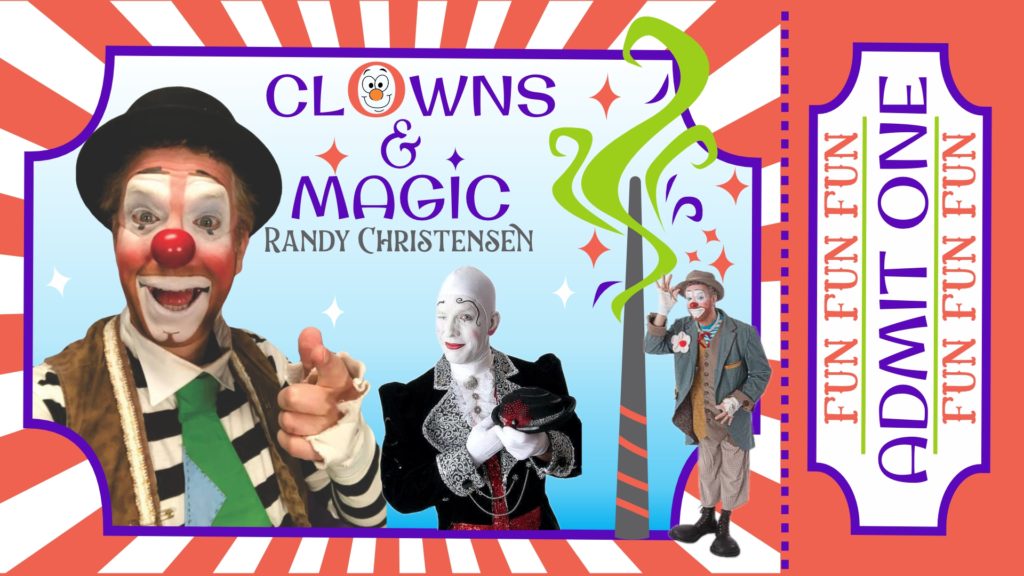
By Randy Christensen
As a child, I became interested in magic tricks. I ordered one of those “T.V. Magic Kits” Marshall Brodien was selling on television. For a couple of years, I read books on magic tricks, bought pocket magic effects and did shows for my family members who endured watching the same tricks over and over. Slowly, my interest faded, and I stored away the tricks in an old suitcase in the back of my closet.
When I was introduced to clowning, I remembered that suitcase. And there it was, waiting in my closet. I still own and use some of those same tricks today.
Each clown has a different presentation than another. Clowning is very individualized. Not all, but many clowns use magic to engage their audiences and to help display their characters.
We usually think of the clown as the “clod,” the simpleton, the “stupidus” character found in Roman theater. Clowns may use magic tricks as comedy effects and in their presentations display misunderstanding, surprise, slapstick and confusion. One of my favorite effects that displays the “clown in trouble” concept is called a “clatterbox.” This is usually an elegant box that ultimately fully breaks apart in one’s hands. Ultimately, the clown character brings the laughs with his reaction. It’s not about the trick. It’s about the action and reaction.
We often think though clowns as physically clumsy and dim-witted, many clowns portray as the “magi” (keepers of secret knowledge). Often clowns have been characters of extreme wit and talent. The Pierrot, performed by Jean-Charles Deburau, became a very sophisticated character, though he once was a comedy character. Dan Rice, probably America’s all-time greatest clown, was not a stupid character. He did political satire, revealing great wit and insights as part of his presentations. Throughout history there are clowns who assumed the role of the “superior” clown; such as William Willet, the famous “Shakespearean jester.”
During the Harlequinade of the 1800s, (which followed the commedia del’arte period) the characters performed on theatrical stages. During the show, these clowns vanished and appeared many times within a few minutes during their performance. Decapitations and restorations occurred during every performance. The audiences loved these magical characters performing feats beyond the ordinary.
Good clowns exist “a step beyond reality.” They are not just ordinary people wearing make-up and acting like any other ordinary person. I propose that the clown using magic tricks also need to be more than a magician wearing make-up. The clown is more than that. The clown himself is magical. Have you noticed the sense of wonder in a child’s eyes when they truly believe that you, as a clown, are real? The real magic happens when a person “believes.” Regardless of whether you use magic, I hope you bring that magical experience for your audience.
